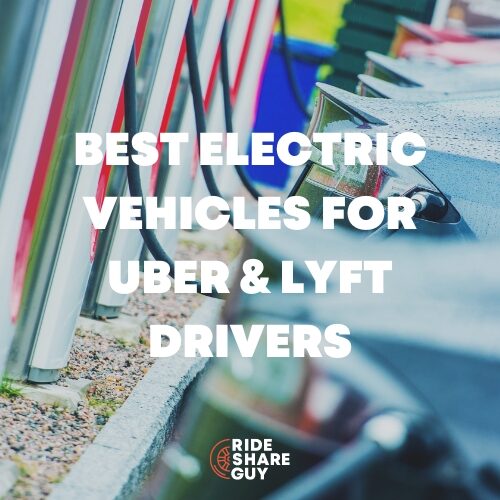Don’t believe me when I say The Rideshare Guy reads every email you send us? It’s true! Recently, RSG received an email from a reader who wrote about the lack of affordable used cars for rideshare work:
“You should write about the lack of a good used $10,000 car…..a four-door used car…it is a big problem as Uber drivers need to make money in this horrible economy.”
We put senior RSG contributor Gabe Ets-Hokin and his vast knowledge of all things cars to the test and challenged him to find any decent vehicles available now for rideshare drivers $10k or under.
What did he come up with? Check it out below!
Determining What You Need (Beyond $10,000)
If you need a car for gig work—delivery, rideshare, etc.–the style and features of the car may vary, but unless you’re a special kind of masochist, it really should be economical, dependable and as new as possible.
Depending on the market and type of driving you do, the car should be between 10 and 15 model years old (Lyft and Uber’s vehicle requirements vary by market; some require very new cars, check out Uber vehicle requirements and Lyft vehicle requirements.)
The reader who reached out to us feels a used car should have under 35,000 miles, but because the average car gets driven about 14,000 miles a year, that kind of mileage is going to limit you to a subpar $10,000 car, one that rhymes with “hodge fart” or “pee yacht.”
I’d go to 90,000 miles, as modern cars are, in general, pretty well made. If you’re doing rideshare, you want at least 30 mpg combined mileage (or better yet, a hybrid), four doors with five seatbelts and no glaring cosmetic damage. It should also be something that is reasonably cheap and easy to service and repair.
Wondering what the best cars are for rideshare in 2022? They may not be under $10k, but take a look at this video to see our recommendations: What Are The 5 BEST Cars For Rideshare In 2022
Where to Find a $10K Vehicle
Autotrader
I love me some Autotrader. Its search engine is excellent and almost every new and used car dealer takes advantage of it. You can get free CarFax reports, link to the dealer website and discover makes and models that you didn’t know about.
I admit to using it for most of my automotive research when I do this kind of story, and it’s the first stop I recommend to prospective car buyers.
My only real nit is that it isn’t used much by private sellers, who charge 10 or 20 percent less than dealers, although that gap has noticeably shrunk in the last two years.
Craigslist
Oh Craigslist. What site better represents the rapid dominance of the classifieds market by the Internet? You probably killed 10,000 small (and large!) publications around the world, but we still love you.
Anyway, Craigslist is a little harder to search than Autotrader, but recent changes to the search function have made it much better—you can search by make and model or by price, mileage, title status, and lots more.
The only real disadvantage is the lack of nationwide search, but since Craigslist is so much better for finding private sellers, I find the local search is fine—Craigslist will even make recommendations for nearby regions,
Main disadvantage: Frequent scam artists. Beware. Any ad on Craigslist that looks too good to be true is too good to be true and some scammers are very good at what they do. Use common sense and you’ll be okay.
Facebook Marketplace
Facebook Marketplace is like Craigslist meets eBay meets a sweaty fever dream of products and ads. It’s difficult and annoying to use, but if you stick with it and learn how to search, you can find some good deals because it’s so easy to post an ad.
Just be wary of salvage titles (which means you can’t use them for gig work) scams and flakes—for some reason people post an ad on Facebook Marketplace and then never respond to queries.
Enthusiast Forums
Every make and model of car, no matter how absurdly mundane or bland, has an enthusiast forum where people get together and trade tech tips, accessory recommendations, and of course, rabid invective. They have classified listings in most of them, and prices may be more reasonable here because they’re posting the ads for other enthusiasts who know to the penny what that car is worth. It’s also a great way to research any issues that models may have.
My Picks for a Rideshare Vehicle Under $10K
So if I had to buy a car for under $10,000, here are my recommendations.
UberX/Lyft:
Surprise(not)! Prius, Prius and then more Priuses (yes, that’s probably the most-correct plural). It’s a mind-numbingly dull car to drive, but if you want $10,000 to go really, really far, there’s a good reason it’s the number-one single rideshare car model.
But act fast. Because if you’re looking for a Prius with under 100,000 miles on the clock, an ad posted at 9:00 am may not be up at noon. Still, as of right now, I’m still seeing clean, used Priuses that are old, but in good running shape and still under $10,000.
Spend a bit more money and get the 2010 model year and up—it’ll be easier to find parts for and is a better car than the older ones.
In fact, these cars are so legendarily reliable I’d confidently buy one with 150,000 miles if a mechanic gave it a clean bill of health. The big question mark—the traction battery—is surprisingly cheap to replace. A local shop will swap out a bad battery for a reconditioned one for $500. Spend $1,800 and they’ll install a brand-new one with a three-year warranty.
If you want something that’s a little higher risk mechanically but is faster and more fun to drive, check out a Ford C-Max. Anything hybrid is spendy these days, but there are lots of C-Maxes around the $10,000 mark.
I put 115,000 miles on one—the only major issue was the fuel pump failing around the century mark. Oil changes are every 10,000-20,000 miles, and I never had to change a single brake pad. They’re also roomy, surprisingly quiet, and really easy to get in and out of. The early C-Maxes are known for some reliability issues; avoid the 2013.
You also might see a Prius C around, and they’re bargain-priced compared to the big-girl Prius. They’re cramped; bigger people might need to be greased up to get in and out of one, but they’re actually kind of fun to drive (if depressingly slow) and get 50-plus mpg in the city.
If you don’t want a hybrid, I’d look at a Hyundai Elantra or Toyota Corolla. For the Hyundai, the 2011 is the sweet spot, with a sub-100,000 mile one coming in under $10,000 in most places.
I recommended it before the Toyota because I think you get more with the Hyundai—better economy, better styling, nicer interior and more power—but if you can find a Corolla you’d actually want to drive for $10,000, by all means check it out.
A note for our snow-bound friends: you may or may not need all-wheel drive, which adds a lot of expense. It’s possible you could find a Subaru—always the price leader for AWD used cars—but you get more maintenance, more expense, and worse fuel economy. I’d guess having AWD will add $20,000 to your costs over five years compared to a Prius.
I’d just park on the extreme weather days and count the money I saved, but as a native Californian, I get frequently reminded I have no idea what it’s like to live somewhere with real weather, so please, you do you.
Cars for Delivery Drivers
Most delivery drivers do rideshare as well, so the above recommendations stand, but if you’re just doing deliveries you can save money buying the two-door versions of the Hyundai Elantra, or Honda Civic, since four or five doors are always in higher demand.
What About a Car for $5,000?
And now, for the extremest of the extreme cheapskates, the $5,000 rideshare car. (drumroll)
The Prius! Surprised? Probably not, but how do you score one so cheap? Keep your ear to the ground locally and look for a car that needs a new battery or, very likely in urban areas, a missing catalytic converter.
I stumbled on lots of cars with under 200,000 miles that would probably run like champs with a couple of thousand dollars invested for under $3,000. There are even YouTube videos for do-it-yourselfers.
If you don’t want a hybrid, the smaller Hyundai/Kia models—Accent and Rio—are out there for under $5,000, but you’ll have to look hard and move fast when you see them.
If you do get one, you won’t have a particularly fun, good-looking, comfortable, or even fuel-efficient car (sub-compact cars, because their motors work harder, don’t get much better fuel economy than their bigger siblings), but it will be reliable and earn you money.
At the end of the day, that’s why we’re here, right? Happy hunting.




